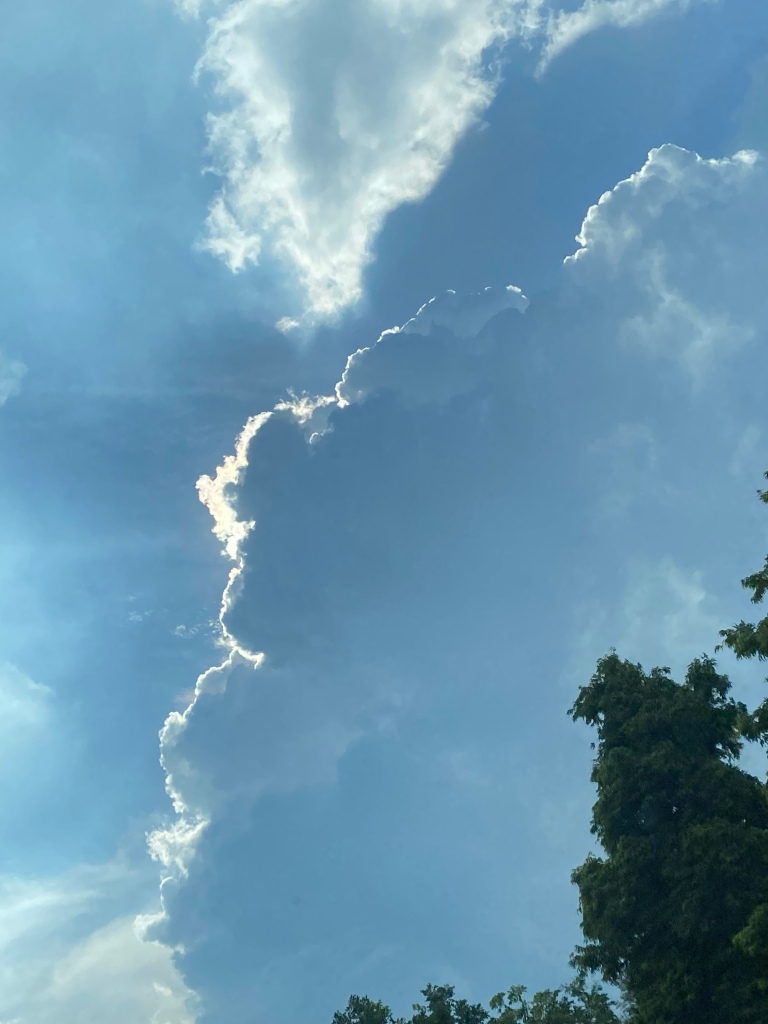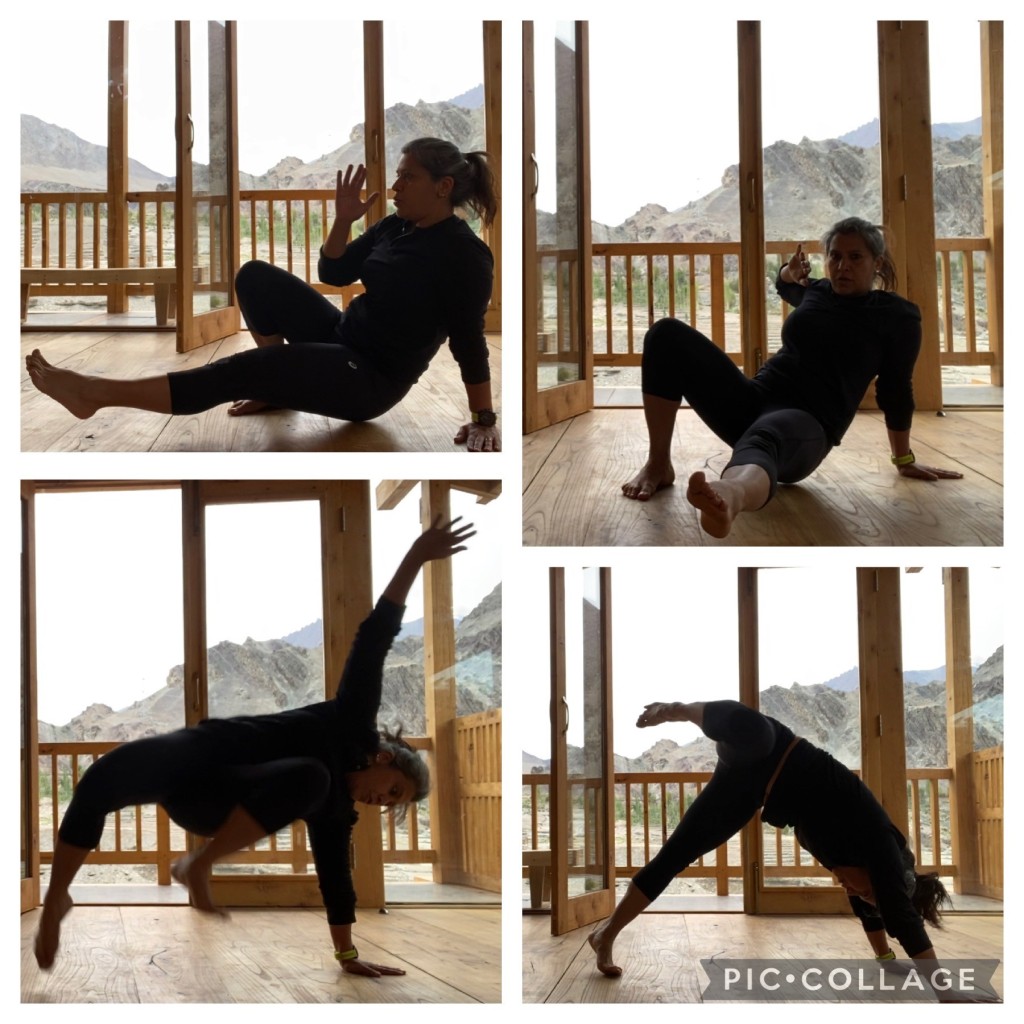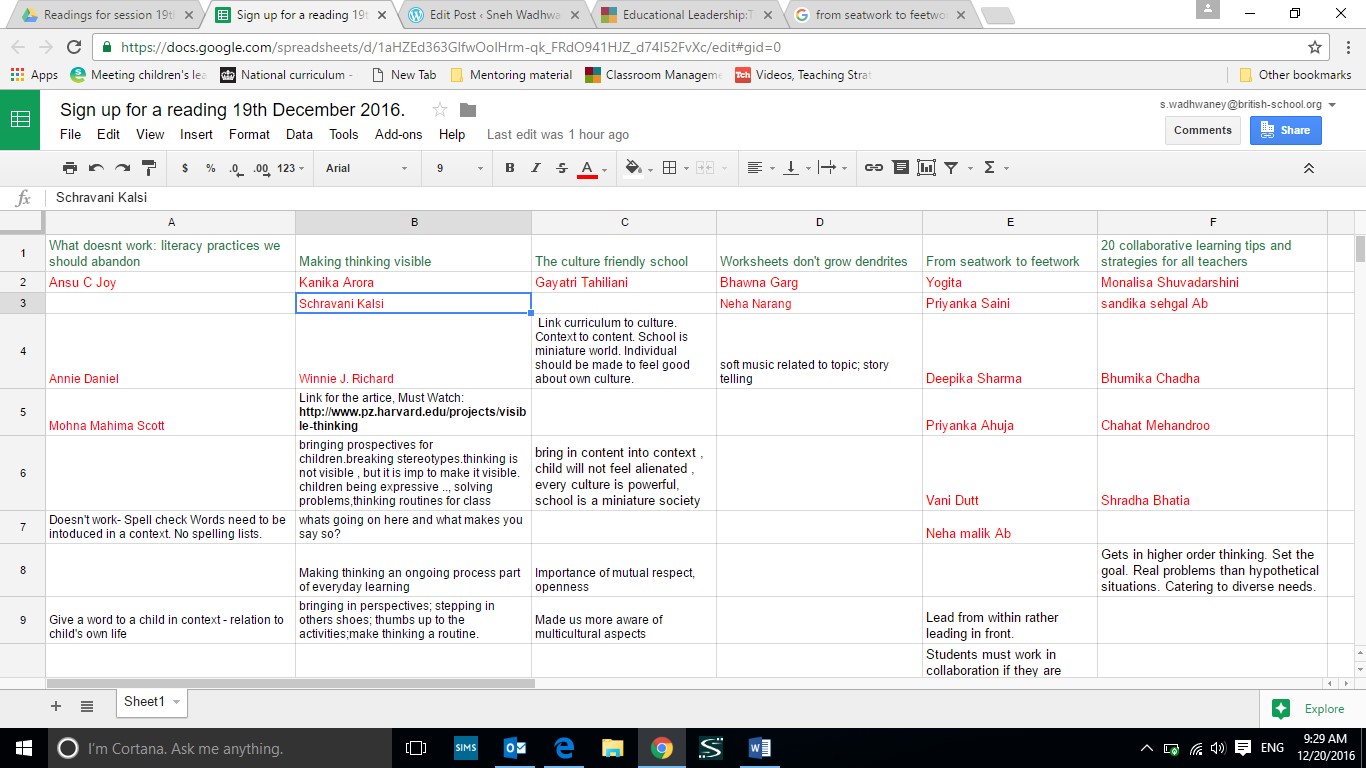When I came across Rosabeth Moss Canter’s ‘Six keys to success’ they struck me immediately for their high transferability. I could think of so many different contexts in which these could be applied! Think of leaders in the classroom, leaders of students, leaders of teams or departments, leaders of curriculum areas or year groups, leaders of subjects, leaders of learning! We are all, each one of us, part of a team.
I like the simplicity and ease with which one can remember these tenets and use them to take stock or evaluate one’s capacity to lead. They serve as useful reminders and are a great tool for introspection.
Show up
Bring your complete self and be prepared to make a difference. There are days when everything that could have gone wrong, goes wrong, but you lift yourself up, rise up and show up. At that moment, half the battle is won. You have shown up and most of the time, everything else will fall into place.
Have you ever tried to start a new routine? Committed to walking everyday? If you just get those shoes on and step out, 99.9% of the time you will get that walk done too. You’ve shown up!
Make yourself available. Be accessible and allow yourself to listen, empathise and understand all perspectives. This helps you to make informed decisions. By listening, you are present and sometimes all that’s needed is your presence.
Show up actively, eager to make a difference. The medical director of the hospital, Dr Max Goodwin, in the series ‘New Amsterdam’ greeted every single doctor or patient by asking ‘How can I help?’ His question showed and expressed a sense of purpose, an active engagement and an interest in every single person. He showed up with intent. He wanted to make a difference.
Speak up
Every voice is important. Every voice needs to be heard.
Stop and think. Is there anyone in your team whose voice you have not heard yet? Is there anyone’s perspective that isn’t being sought? The silent voices – are there any?
A good idea is a good idea and can come from anywhere. It is important as leaders of learning to listen to ideas that aren’t always in-sync with our own.
In his book ‘The Greatest’, Matthew Syed says, ‘cognitive diversity can strengthen individual, team and institutional performance.’ The greatest inventions and innovations didnt come from people who thought similarly but from those who offered a different perspective, who challenged. Groupthink is not something you want, if you seek innovation. You want diverging ideas. If there is a voice that challenges your thinking, you need to hear that voice, you need to pay attention because that may just be the voice that will spur you on to your next best innovation in the classroom or department!
We all have the right to be heard. The ‘Power of Voice is about shaping the agenda and being ‘thought leaders’. Help children to find their voices.
Look up
Look up to a better version of yourself. Look up to being a better teacher, a better person, a better individual than you were yesterday.
Ever looked up at the sky? There is hope in the act of looking up. When we look up, figuratively and literally, we invite possibilities, hopefulness, aspiration, yearning and so much more.

Look up to clarify the why. The pace of everyday life can blur our vision and leave us with little time for processing, actioning and introspection. We need to stop, take stock and find the space and time to revisit the shared vision and goals from time to time. We need to remind ourselves of why we are doing this work. We need to tap back into the vision and purpose.
‘Know what you stand for and be able to elevate peoples eyes from everyday problems to a higher vision and gain a sense of hope. Leaders who do this are in a position to prevent what Canter refers to as ‘hollow leadership’.
Never give up
It is one of the most satisfying things to do something to the best of our ability, to know that we are making a difference. There is a deep satisfaction which comes from doing things that are difficult. It takes guts, a willingness to get things wrong, and to keep going back and trying. Again and again. The struggle is part of the process. Never giving up is about pushing through barriers, stepping back and regrouping.
‘Being aware and genuinely ready to dig deep as individuals, as leaders, as whole-teams and as learning organisations is underpinned by the requirement to persist, be resilient and resolute all the way through the implementation dip(s) which Canter refers to as ‘the messy middle’.
‘The skills required to conquer adversity and emerge stronger and more committed than ever are the same ones that make for extraordinary leaders.’
Team up
Everything goes better when we are working with other people. Share ideas. You really are ‘stronger together’. Nearly everything worth doing is very difficult to do alone. Even though GOAT Kipchoge runs his marathon alone, an individual sport, he acknowledges the team effort that takes place behind the scenes.

Lift others up
Look for the good in others. Encourage people. Acknowledge and celebrate the smallest successes. The small stuff is the big stuff! ‘Sharing and giving back to others is fundamental to ensuring the Six Keys are part of a sustainable cycle of development, innovation and ensuring we can all be part of a system that makes a difference.’
References:
https://hbr.org/2002/09/crucibles-of-leadership
https://www.soniagartside.com/blog/2016/6/21/how-to-deal-with-the-messy-middle


